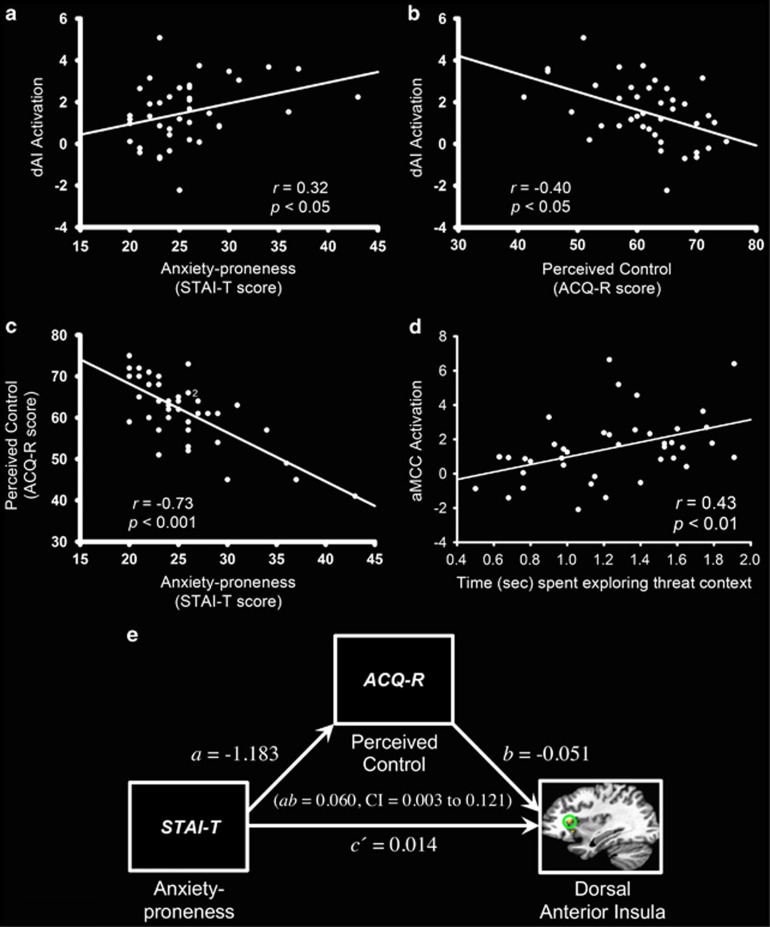Figure 3.
(a and b) Dorsal anterior insula (dAI) activation is positively correlated with anxiety proneness and negatively correlated with perceived control. (c) Anxiety proneness, as measured by trait anxiety scores, is inversely correlated with perceived control over aversive events. The numeral two indicates two overlapping data points. (d) Increased activity in anterior midcingulate cortex (aMCC) was associated with greater exploratory behavior in the threat context. Activation values on the y axis are beta coefficients representing mean percent signal change during anticipation of unpredictable threat (threat > safe). (e) Schematic representation of the mediation model. The pathway from STAI-T to ACQ-R (path a) and then from ACQ-R to dorsal anterior insula (path b) represents the indirect effect of anxiety proneness on dAI activity through perceived control (quantified as the product of paths a and b). The pathway from STAI-T to dAI (path c') represents the direct effect of anxiety proneness on dAI activity. Model coefficients are reported in unstandardized form, thus they map directly onto the measurement scales used. A 95% confidence interval (CI) for the indirect effect (ab) does not contain and is entirely above zero, thus providing evidence that perceived control serves as a mediator of the effect of anxiety proneness on dAI activity. ACQ-R, Anxiety Control Questionnaire-Revised; STAI-T, Spielberger State-Trait Anxiety Inventory.

